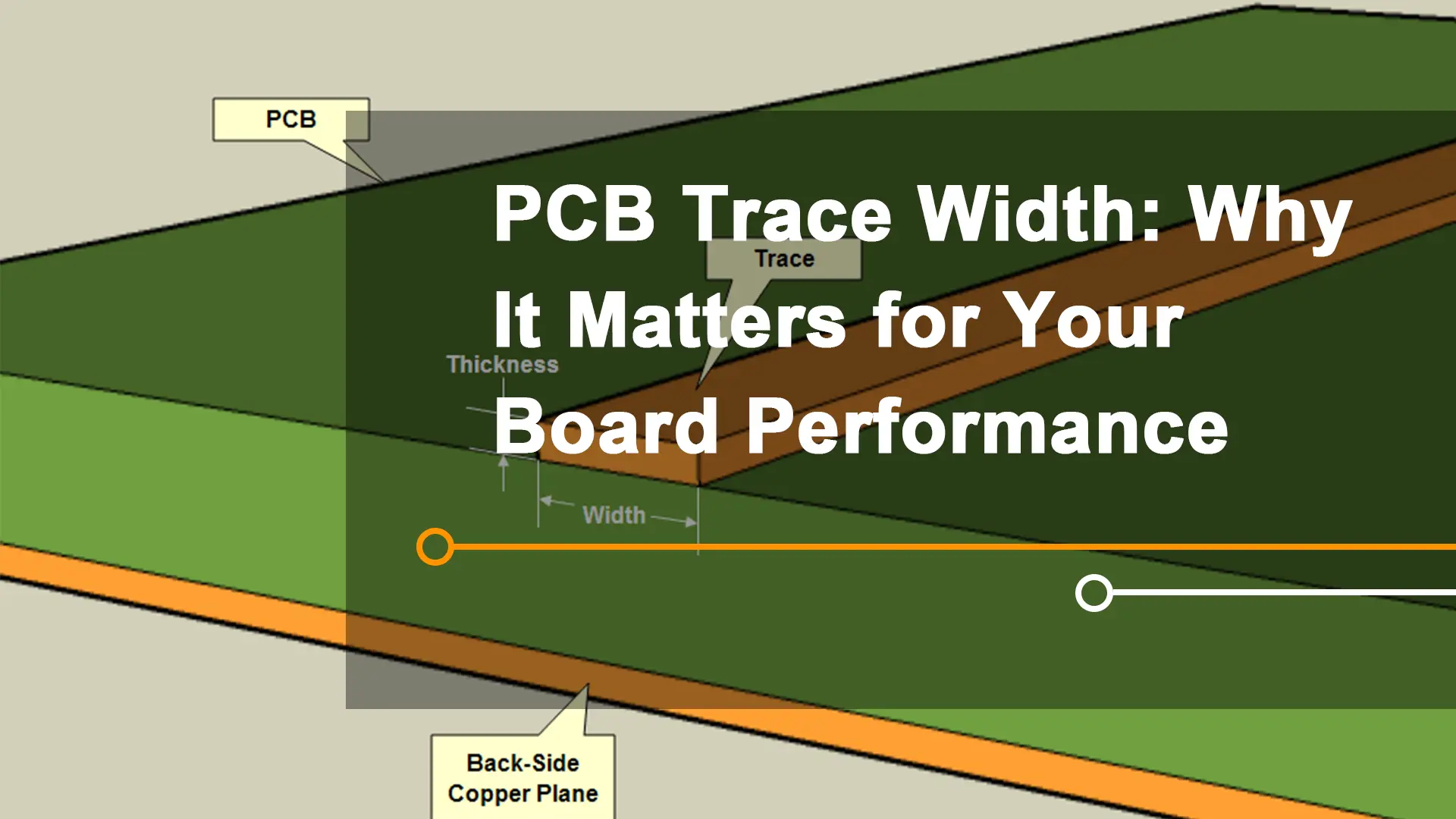PCB Trace Width: Why It Matters for Your Board Performance


PCB trace width specifically refers to the width of copper traces that carry vital signals and power across the printed circuit board. Determining appropriate trace widths is an important PCB design consideration impacting current density, temperature rise, signaalintegriteit, produceerbaarheid, en meer. There is no one-size-fits-all trace width that will work for every unique situation. In plaats daarvan, finding the optimum balance requires carefully weighing each of these interconnected factors as they pertain to your specific design requirements and constraints. Read on to learn more about what factors influence calculating trace widths and why getting them right matters.
Importance of PCB Trace Width
Finding the optimal trace width for the signals and power paths on your printed circuit board requires making important tradeoffs. Narrower traces take up less physical space on the board, allowing for more densely packed layouts. Echter, these narrow traces come with downsides like increased electrical resistance and impacts on reliability over time. alternatief, wider traces provide lower resistance and can handle higher currents without issue, but consume more total area on your PCB. Determining the most appropriate trace widths given your design constraints involves striking the right balance between these competing factors.
Beyond just their effects on board space utilization, getting your PCB trace width right has additional implications related to performance and lifetime reliability. Narrow but high current traces can overheat and literally damage your board or attached components. Excessively wide traces might meet electromigration standards but hamper your ability to route other critical signals. With so much affected by these fundamental PCB building blocks, applying appropriate design consideration to determining your trace widths is essential.
Further reading: De essentiële gids voor PCB-sporen: De basis begrijpen.
Key Factors Influencing PCB Trace Width


Trace widths are typically measured in mils, which equate to one-thousandth of an inch. For ordinary signals without special requirements, standard trace widths often fall somewhere between 7-12 mils. Echter, there are many important factors that influence selecting an appropriate trace width:
- Current Capacity
Determining the appropriate trace width requires balancing current capacity needs with available space constraints. Traces must be designed to safely carry expected current loads without excessive temperature rises which can damage boards. This is a function of the trace width itself as well as copper weight, with thicker layers better dispersing heat. Echter, using oversize traces where not needed wastes valuable layout area, especially on dense multilayer boards.
- Space Availability
Another key aspect is the physical space available for traces in a given section of the PCB layout. Wider traces take up more routing area, limiting component placements or trace paths in dense, crowded designs like multilayer boards packed with high pin count devices. In more complex boards where space is at a premium, restrictions may dictate the use of narrower traces than would otherwise be utilized for a given current load. This requires weighing both electrical needs and physical space constraints when selecting a final width.
- Manufacturing Limitations
Manufacturing capabilities also inform feasible trace geometries. Very thin traces under 4-5 mils are high risk for fabrication defects or breaks with standard processes. Tighter tolerances further complicate reliable volume production. Echter, economic factors lead fabrication facilities to target minimum features above 8 mils when able. Understanding these process limitations ensures that designed trace widths balance robustness and costs.
- Trace Termination
The specific trace termination method impacts width suitability as well. Vias transitioning traces between layers incorporate surrounding barrels to alleviate localized heating. But simple open stubs rely solely on the trace itself to dissipate currents, suggesting slightly oversized widths as needed. In all cases, suitable widths ensure stable electrical connections.
- Impedantie Controle
Controlling inter-signal impedance is another trace width consideration, especially for matched critical paths. Any deviations in paired trace widths alters characteristic impedance values, creating distortions. Zo ook, width changes at pad interfaces should be tapered smoothly control variations. Details like reference plane spacing further complicate calculations through ratios of width to dielectric heights.
- Pad Connections
Attachments to pad geometries influences suitable trace openings. Traces often neck-down from oversize pads or pins, aiding flow and reducing discontinuities. But component densities and pitches impose lower bounds constraints based on connection spacing. Together, these factors inform minimum widths for a given pad interface.
How to Calculate Trace Width?
Various free online tools help calculate appropriate PCB trace widths. After inputting key details like:
- Target current (Amperes)
- Desired temperature rise (bijv. 10°C over ambient)
- Corresponding max trace temperature
- Koperdikte (common values: 1oz/35um or 2oz/70um)
- Assumed ambient temperature
These calculators output minimum trace width needed to avoid overheating while carrying the specified current.
For controlled impedance traces, additional parameters are required like:
- Target impedance (bijv. 50 ohms)
- Relative PCB dielectric thickness and PCB material type
- Presence of ground/power planes
By plugging electrical requirements and board construction details into an online PCB trace width calculator, suitable widths for both signals and power traces can be determined.
Laatste gedachten
The width design for the often overlooked copper traces on PCBs impacts everything from voltage drops to manufacturability. Finding the optimal trace width requires navigating tradeoffs between PCB trace current capacity, space restrictions, fabrication limits, enzovoort. With an understanding of the key elements that influence trace width suitability, designers can leverage online PCB trace width calculators to determine widths that deliver needed functions without overdesigning.
Echter, if you lack extensive expertise in navigating these trace width tradeoffs, it proves wise to partner with a veteran PCB layout specialist. An expert designer provides professional guidance to ensure optimal trace width selections aligned to performance objectives across prototyping iterations and volume production. Still have questions about PCB trace? Klik hier to consult our experts.
recente berichten
Impedantie-aanpassing: A Critical Factor in High-Speed PCB Design
Impedance matching has become a cornerstone of the signal integrity in the realm of high speed PCB…
How to Clean a Circuit Board Safely and Effectively?
It is important to learn how to clean a circuit board properly if you’re working…
Counterbore vs Countersink: Which to Choose for Your PCB?
When designing PCBs, selecting the appropriate type of holes for fasteners is crucial. And much…
PCB Copper Foil: Soorten, Properties & Hoe te kiezen
PCB copper foil is one of the most critical materials in the printed circuit board…
MOKO Technology Launches Vietnam Manufacturing Base in February 2025
Shenzhen, China - februari 11, 2025 - MOKO-technologie, a leading global electronics manufacturing service…
PCB Solder Mask: What It Is and Why Every Circuit Board Needs It?
While most people focus on the components and copper traces that make up PCBs, there's…


